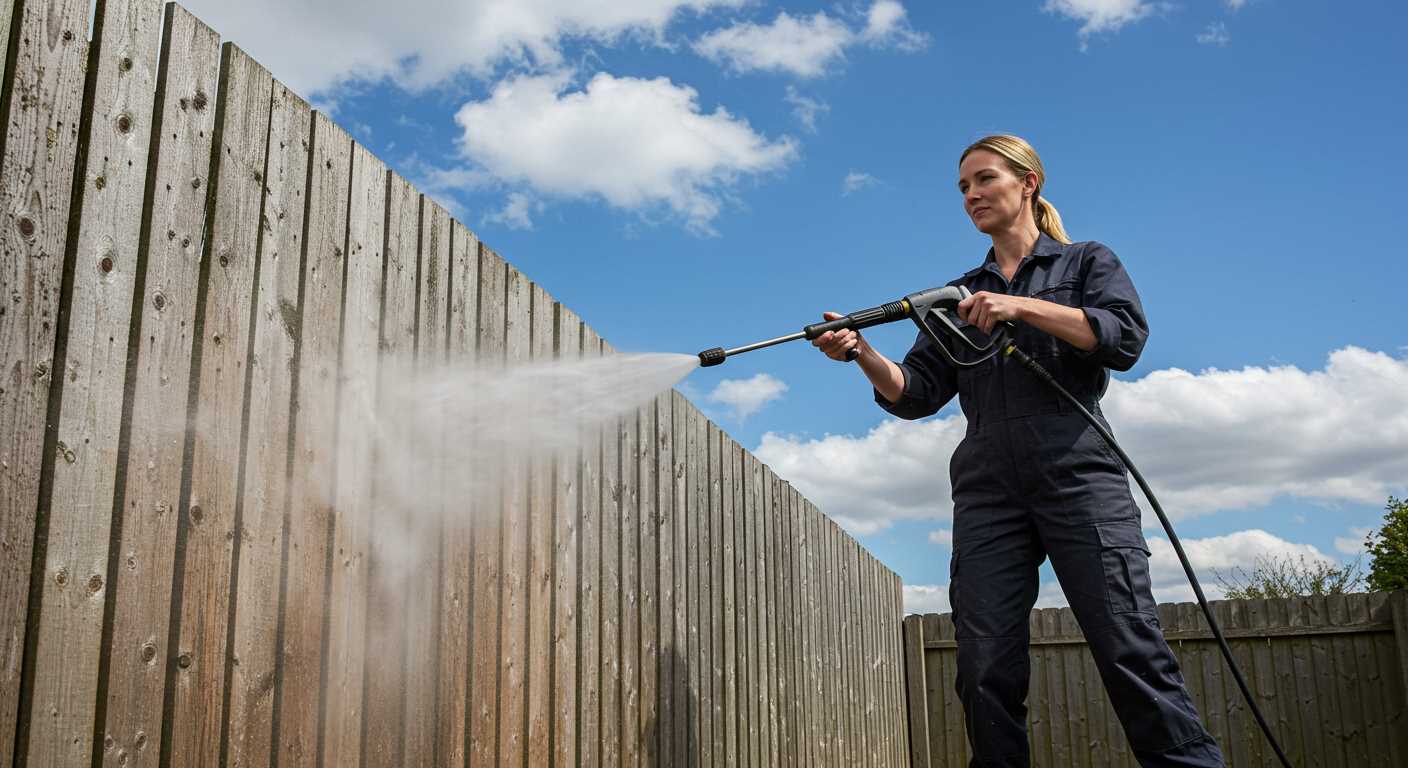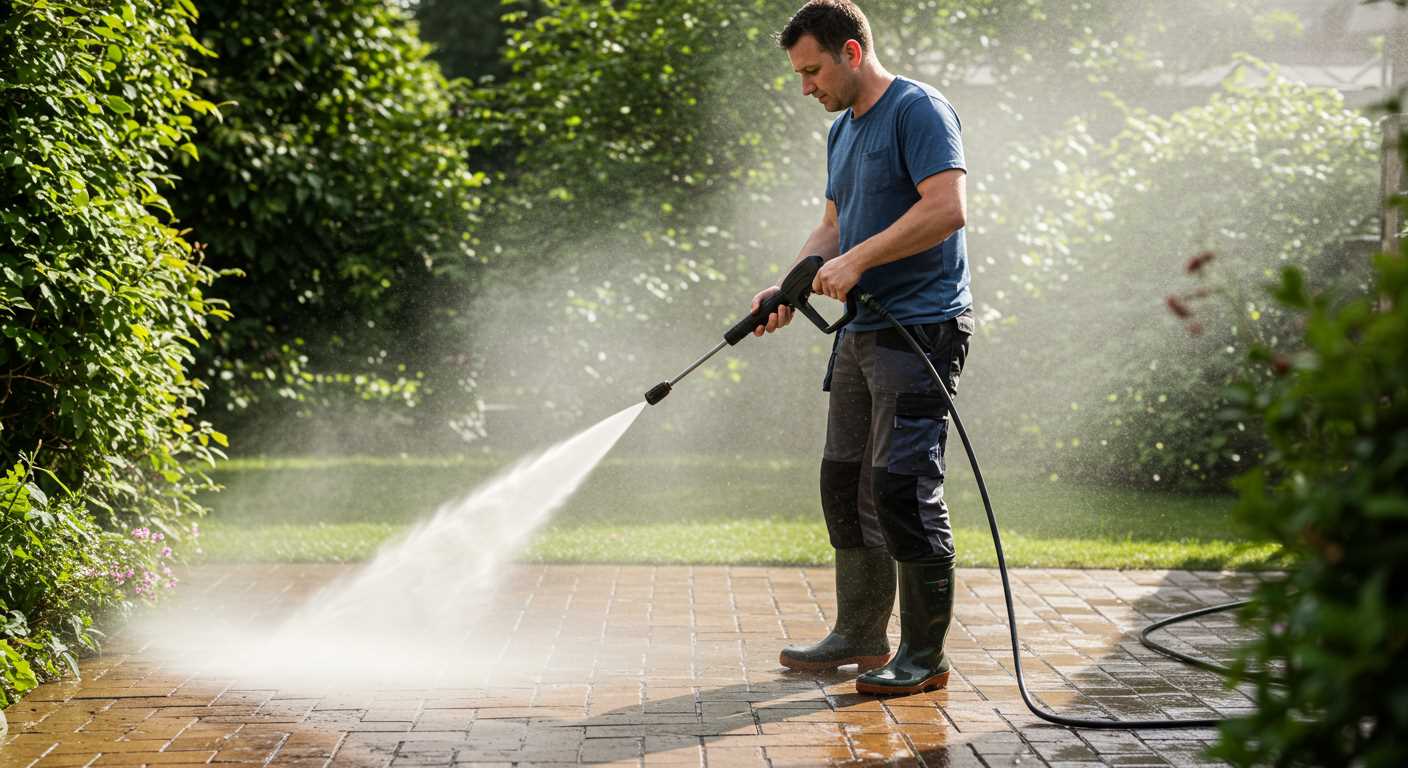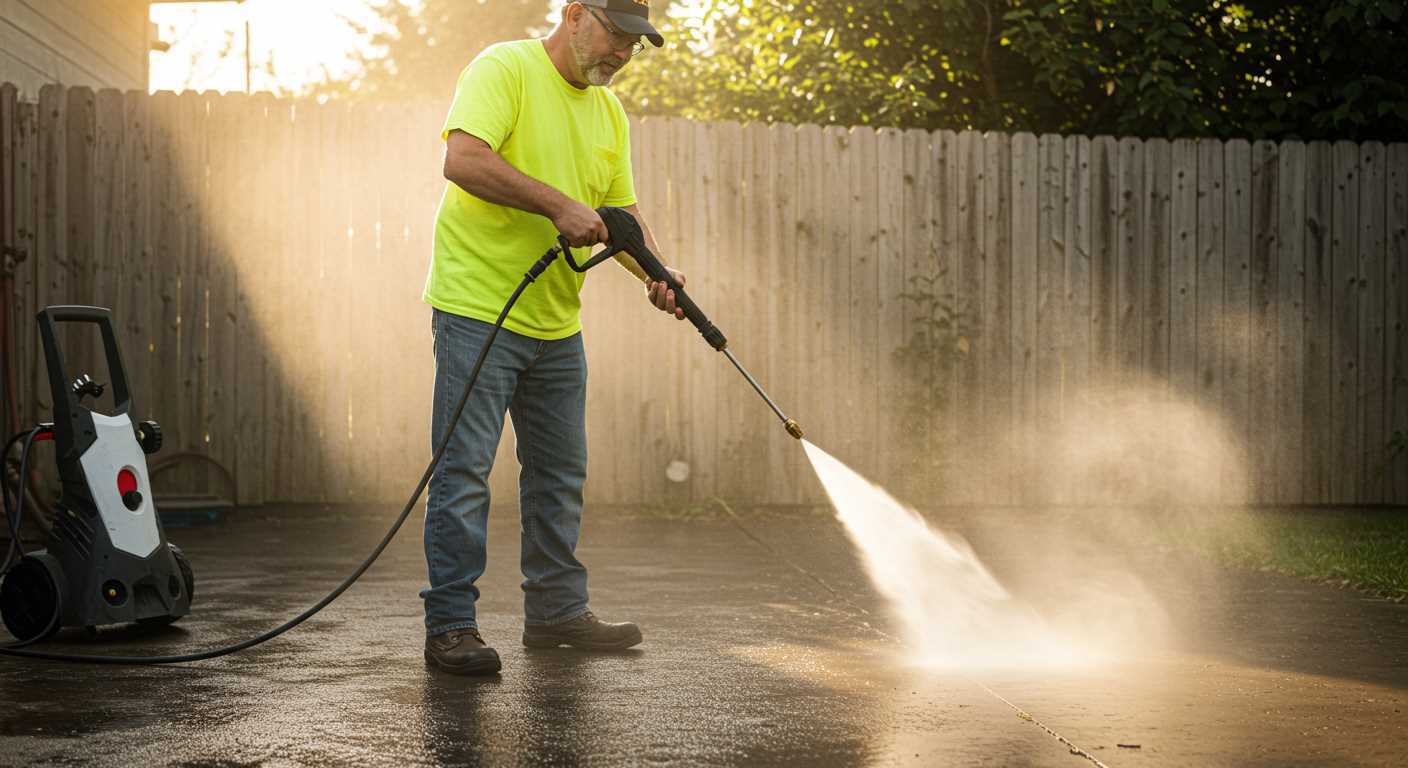

To remove grime and stains from stone surfaces, consider using a solution of white vinegar and water mixed in a spray bottle. This mixture harnesses the natural acidity of vinegar, effectively breaking down dirt and algae. Apply it generously to the affected areas, leave it for 15 minutes, then scrub with a stiff brush to achieve a noticeable difference.
For stubborn spots, adding baking soda to your vinegar solution can enhance its potency. The combination creates a gentle abrasive effect, making it easier to lift tough marks. Be sure to rinse thoroughly with water after scrubbing to avoid any residue.
In case of persistent moss or lichen, a blend of dish soap, salt, and water can be beneficial. Mix these ingredients until they dissolve, spray on the troublesome areas, and allow it to sit for several hours. The soap aids in loosening debris while the salt discourages regrowth, providing a longer-lasting solution.
Remember to always test any cleaning solution on a small, inconspicuous section prior to widespread application. This precaution ensures that the surface won’t be damaged or discoloured during cleaning.
Understanding the Types of Stains on Paving Slabs

Identifying specific stains is crucial for selecting the right removal technique. Organic stains, such as those from leaves, food, or animal droppings, typically manifest as dark spots and can be tackled with a mixture of warm water and mild detergent.
Oil stains, often from vehicles or grills, appear as greasy blotches. For these, I recommend sprinkling baking soda over the area to absorb the oil before using a stiff brush and a detergent solution.
Rust marks usually originate from metal objects placed on the surface. A paste of lemon juice and baking soda can efficiently lift these stains. Apply, let it sit, and scrub gently.
For efflorescence, a white powdery residue, a simple dry brush can remove most deposits. However, persistent cases may require a mixture of vinegar and water to encourage the dissolution of mineral buildup.
Finally, algae and moss can create slippery surfaces, presenting both aesthetic and safety concerns. A combination of vinegar and water sprayed on these growths will inhibit further spread and make it easier to scrub away any remaining traces.
Selecting the Right Cleaning Solutions for Different Stains
For grease and oil marks, a mixture of warm water and dish soap works wonders. Apply the solution with a stiff brush, allowing it to sit for several minutes before scrubbing and rinsing with clean water.
To tackle rust stains, a paste made from baking soda and water is highly effective. Spread the paste on the affected area, let it sit for 30 minutes, then scour with a brush and rinse thoroughly.
Organic Stains

For stains from leaves or organic matter, a simple vinegar solution can restore the surface. Combine equal parts white vinegar and water, apply, leave for 10 minutes, and scrub the area to lift the discolouration.
Moss and Algae Build-Up
For moss or algae, bleach diluted with water can be beneficial. Mix one part bleach to ten parts water, apply it to the area, allow it to sit until you see results, and then rinse thoroughly to prevent any residue.
Preparing the Surface: Clearing Debris and Loose Dirt
Begin with a thorough examination of the area. Remove any large objects like branches, leaves, or garden furniture that might obstruct your task. This initial clearing phase not only enhances visibility but also prevents interference during the cleaning process.
Next, utilise a sturdy broom or a push broom to sweep the entire surface. Pay special attention to the joints between the stones, as this is where dirt accumulates. Side-to-side motions will efficiently gather loose soil, making it easier for the next steps.
If you encounter stubborn dirt or moss, consider using a hoe or a stiff brush to dislodge it from the crevices. A handheld trowel can also assist in scraping away debris stuck in tighter spots. After this, it’s beneficial to use a leaf blower to remove any remaining particulate matter, especially from hard-to-reach areas.
Table of Tools for Surface Preparation
| Tool | Purpose |
|---|---|
| Broom | To sweep loose debris and dirt |
| Stiff Brush | To scrub stubborn dirt and moss |
| Hand Trowel | To excavate dirt in tight joints |
| Leaf Blower | To eliminate residual debris |
Conclude the preparation by inspecting the area once more. Ensure that all loose dirt and debris have been effectively removed. A clear surface is fundamental for the application of your chosen cleaning solutions, ensuring they can penetrate and work effectively.
Step-by-Step Guide to Manual Scrubbing Techniques
Commence with the right tools. A sturdy broom or brush with stiff bristles will serve as the foundation for effective scrubbing. Select one that easily reaches crevices without causing damage to the surface.
1. Preparing the Area
Clear the surface of any loose materials such as leaves, dirt, or debris. This initial step prevents scratching or potential damage while scrubbing. Ensure the area is dry for the most effective removal of stains.
2. Application of Cleaning Solution
Create a mixture of your chosen cleaner and water in a bucket. Apply the solution generously to sections of the area using a sprayer or a sponge to ensure thorough saturation. Allow it to sit for several minutes to loosen stains.
Using your stiff-bristled brush, scrub the surface firmly in a circular motion. Focus on stained areas, applying more pressure when necessary. For dropped food or oil stains, consider a dedicated cleaning solution for effective results.
After scrubbing, rinse the area with clean water to remove residue. Revisit any stubborn stains, repeating the application and scrubbing process as required.
Finally, allow the surface to air dry completely. Depending on the weather, this process may take a few hours to a day. Regular maintenance will make future upkeep easier.
Using Natural Remedies for Eco-Friendly Cleaning
Consider using vinegar and baking soda as a powerful duo for tackling stubborn grime and unwanted marks on your surfaces. Vinegar’s acidic properties help dissolve mineral deposits, while baking soda acts as a gentle abrasive.
Application Techniques
- Mix equal parts of white vinegar and water in a spray bottle.
- Spray the solution liberally over the stained areas.
- Allow it to sit for about 10-15 minutes to break down the stains.
- Sprinkle baking soda directly onto the damp surface for added scrubbing power.
- Use a scrub brush to agitate the mixture, ensuring the solution penetrates any tough marks.
- Rinse thoroughly with clean water afterwards.
For organic stains, such as those from food or plant residues, a paste made from baking soda and water can work wonders. Simply apply the paste directly onto the stain and let it sit for a while before scrubbing gently.
Alternative Options
- Castile soap is a biodegradable option that can effectively remove grease and dirt. Mix a few drops with warm water and scrub the surface.
- Lemon juice can also be beneficial due to its natural acidity. Apply it directly on stains and let it sit before scrubbing.
- For moss or algae, a solution of salt and water can help eliminate unwanted growth. Mix a cup of salt in a gallon of water and apply where necessary.
These eco-friendly solutions not only address various dirt types but also minimise environmental impact, ensuring a sustainable approach to upkeep. The key lies in regular maintenance, as timely attention to marks prevents them from becoming entrenched. Manual techniques with natural remedies can be just as rewarding, providing an effective clean while protecting the planet.
Maintaining Clean Paving Slabs: Tips for Long-Term Care

Regular maintenance involves periodic sweeping to prevent debris build-up, reducing the chances of stains and mould growth. I recommend sweeping at least once a week, especially during autumn when leaves fall.
For long-lasting results, treat your surface with a sealant once every couple of years. This will provide a protective layer, helping to repel liquids and minimise staining. Opt for breathable sealants that allow moisture to escape while keeping dirt at bay.
Should you notice any weeds or moss sprouting, address them immediately. I find that combining boiling water and white vinegar can effectively kill unwanted growth without harsh chemicals. Apply this mixture directly to the affected area and follow up with a gentle scrub.
For shifting stains caused by oil or grease, I suggest an absorbent material like cat litter or sawdust. Sprinkle it over the stain and leave for a day to soak up the substance. After that, remove the material and treat with a gentle detergent solution, using a soft brush for scrubbing.
Finally, regularly inspecting your surface for cracks or loose tiles is crucial. Repair any damages promptly to prevent water ingress and further deterioration. A quick patch-up can help maintain both aesthetics and longevity.








